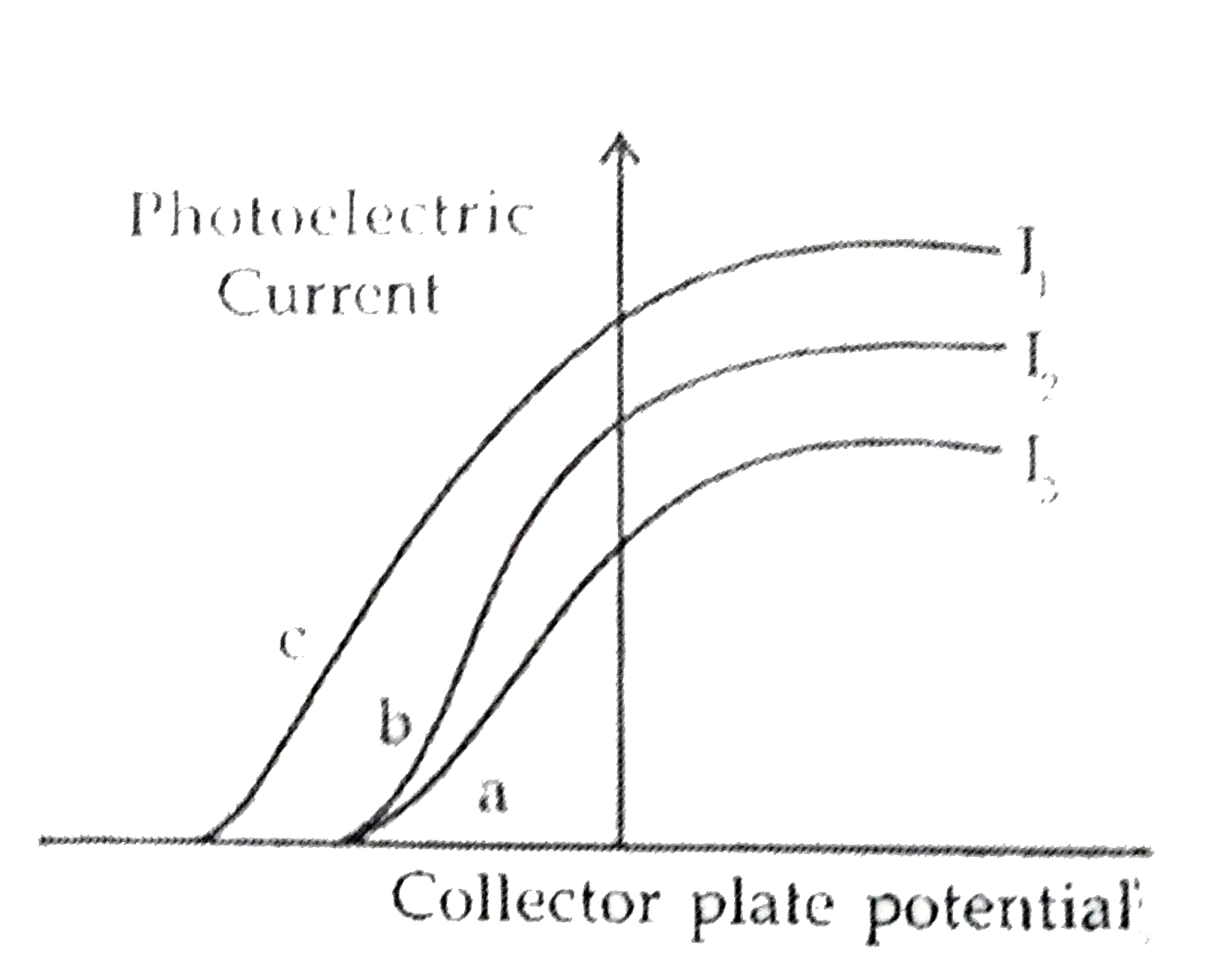From the following graph of photo current against collector plate potential, for two different intensities of light I1 and I2, one can conclude

I1=I2
I1>I2
I1<I2
Comparison is not possible
The correct Answer is:C
The value of photo current depends on the intensity of incident light. Hence, when the intensity of incident light increases, then the value of photo current is increases i.e., Intensity of light (I) α Pho current is increases i.e., Intensity of light (I) α Photo current

From graph I1<I2
Topper's Solved these Questions
Similar Questions
From the following graph of photocurrent against collector plate potential for two different intensities of light I1andI2 one can , conclude

View SolutionFrom the following graph of photocurrent against collector plate potential for two different intensities of light I1andI2 one can , conclude

View Solution
Knowledge Check
From the following graph of photocurrent against collector plate potential, for two different intensities of light I1andI2 one can conclude.
 AI1=I2BI1>I2CI1<I2DComparison is not possible
AI1=I2BI1>I2CI1<I2DComparison is not possibleFrom the graph of photoelectric current versus collector plate potential is shown in the figure we conclude that
 Amaximum KE of photoelectrons is independent of intensityBmaximum KE of photoelectrons is depends of intensityCminimum KE of photoelectrons is independent of intensityDminimum KE of photoelectrons is depends of intensity
Amaximum KE of photoelectrons is independent of intensityBmaximum KE of photoelectrons is depends of intensityCminimum KE of photoelectrons is independent of intensityDminimum KE of photoelectrons is depends of intensity
The figure shows a plot of three curves a, b, c, showing variation of photocurrent vs collector plate potential for three different intensities I1,I2andI3 having frequencies v1,v2andv3 respectively incident on a photosensitive surface.
Point out the two curves for which the incident radioations have same frequency but different intensities.

View SolutionThe Fig shows a plot of three curves a, b, c showing the variation of photocurrent versis collector plate potential for the different intensities I1,I2andI3 having frequencies v1,v2andv3 respectively, incident on a photosensitive surface. Point out the two curves for which the incident radiation have same frequency but different intensities.

View SolutionDraw suitable graphs to show the variation of photoelectric current with collector plate potential for
(i) a fixed frequency but different intensities I1>I2>I3 of radiation.
(ii) a fixed intensity but different frequencies v1>v2>v3 of radiation.
View SolutionDraw a plot showing the variation of photoelectric current with collector plate potential for two different frequenciesv1andv2(v1>v2) of incident radiation having the same intensity. In which case will the stopping potential be higher? Justify your answer.
View SolutionDraw a plot showing the variation of photoelectric current with collector plate potential for two different frequencies, v1>v2, of incident radiation having the same intensity. In which case will the stopping potential be higher ? Justify your answer.
View SolutionDraw a plot showing the variation of photoelectric current with collector plate potential for two different frequencies, v1>v2 of incident radiation having the same intensity. In which case will the stopping potential be higher? Justify your answer.
View Solution
